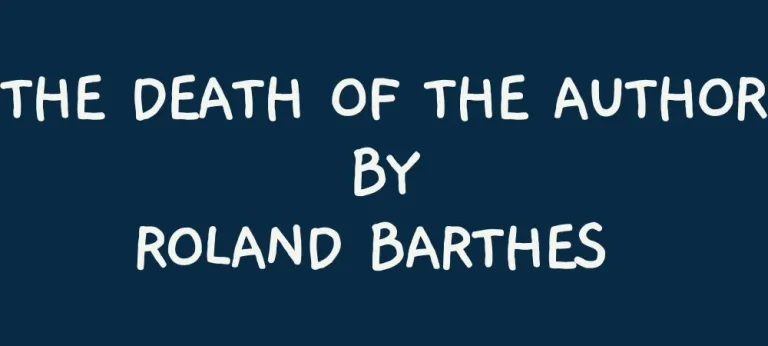French literary critic Roland Barthes first used the phrase “The Death of the Author” in his essay of the same name from 1967. It claims that once a text is published, it loses its connection to the author’s intentions and becomes subject to reader interpretation. This idea challenges the conventional idea that the author is the only authority and interpreter of their work. According to Barthes, the identity and purposes of the author are neither fixed nor knowable, and literature is a synthesis of many voices that transcend individual authorship. According to Barthes, literature is a neutral space where various voices interact and the idea of a single, all-knowing author is questioned. The act of reading becomes crucial in creating meaning from a text along with the reader’s personal experiences, viewpoints, and cultural background.
Modern Drama
Transcendentalism | Definition | Characteristics
In the early 19th century, Transcendentalism became popular in the United States, mainly in the New England region. It highlighted the value of individuality, instinct, and the bond between humans and the natural world. Ralph Waldo Emerson, Henry David Thoreau, and Margaret Fuller are a few of the prominent names connected to transcendentalism. It was a response to the rationalism, technological materialism, and increasing emphasis on business and industry that characterized the intellectual and cultural milieu of the time.
Seamus Heaney’s poetic or writing style
A renowned and prominent poet, Seamus Heaney was noted for his use of expressive and evocative language to explore serious topics and feelings. He was born in Northern Ireland in 1939, started composing poems in the 1960s, and published his first collection, “Death of a Naturalist,” in 1966. He later published numerous articles and translations in addition to more than a dozen poetry compilations. “Digging,” “Blackberry-Picking,” “Death of a Naturalist,” and “The Forge” are some of Heaney’s most well-known works. Throughout his career, he received a great deal of honors and recognition, including the 1995 Nobel Prize in Literature.
Waiting for Godot as an tragicomedy
Comedy and tragedy coexist in tragicomedies. This means that the work includes amusing scenarios that will make the spectator or reader laugh or smile as well as those that will make them sad or uncomfortable due to tragic circumstances or happenings. The story may have a number of terrible incidents, but it usually has a joyful ending—typically following a string of misfortunes. The majority of the characters’ actions and statements are exaggerated, and jokes are woven throughout the narrative to lift the mood.
Epic Theater by Bertolt Brecht | Characteristics of epic theater
A dramatic movement known as “epic theater” emerged in the early to mid-20th century from the beliefs and work of several theater artists, including Vladimir Mayakovsky, Erwin Piscator, Vsevolod Meyerhold, and—most notably—Bertolt Brecht.
Arms and the Man as an anti-romantic comedy
“Arms and the Man” is a famous play written by George Barnard Shaw that was first performed on April 21, 1984. This play uncovers the falseness of the war and deals with the two-facedness of human nature. It is regarded as an anti-romantic play because through this play Shaw has criticized the dreamlike worship of life. The play is also a comedy because in it Shaw has openly ridiculed the futility of romantic love and the idea of war. We can also call Shaw’s play a didactic play because the aim of the dramatist is to show his readers the reality of love and war.
Waiting for Godot as an absurd play
When Martin Esslin published his book The Theater of Absurd in 1960, only then did the phrase “Theater of Absurd” become popular. The theatre of absurd illustrates an attitude and a frame of mind towards life, where human existence is a conundrum of illogical, senseless, and hopeless activity.






